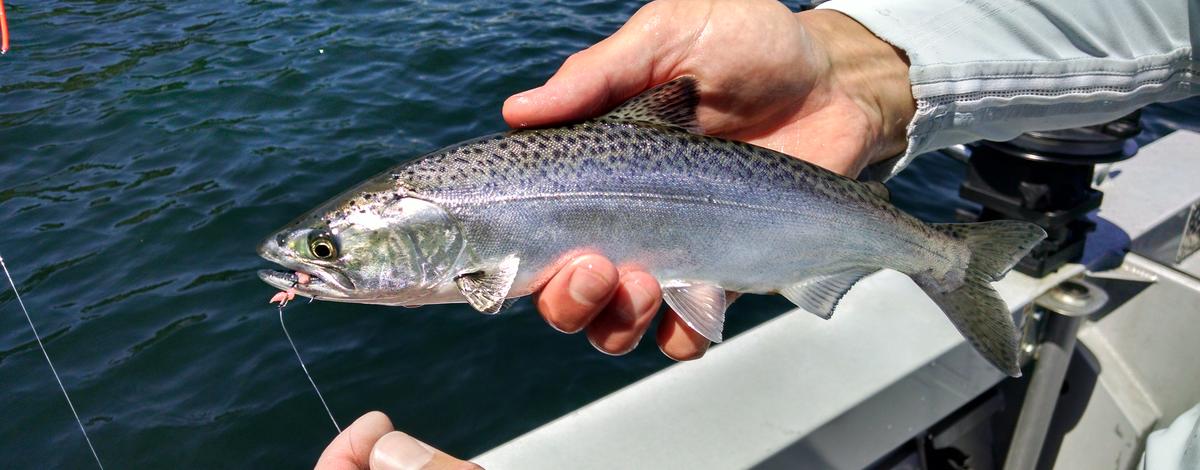Fish and Game biologists are in the midst of a multi-year study in four Idaho reservoirs to evaluate the performance of hatchery-stocked Chinook salmon, and how they can be best used to improve certain fisheries around the state. But assistance from anglers is needed for the study to be successful.
Idaho Fish and Game stocks hatchery Chinook in some lakes and reservoirs, meaning the fish are land locked and don’t migrate to the ocean. In 2016, biologists began stocking two types of Chinook, sterile and fertile, into Anderson Ranch, Lucky Peak and Deadwood reservoirs in Southwest Idaho, and Spirit Lake in the Panhandle.
Sterile fish provide managers more control over the number of chinook in the lake. In some waters, however, sterile hatchery fish don’t survive as well as fertile fish. For this study, biologists are looking at the differences in growth, survival and catch rates between sterile and fertile fish in these particular waters.
The Chinook stocked for this study started reaching catchable sizes in 2017, and anglers have played a crucial role by providing biologists with tissue samples for the study. In the first two years, researchers received 125 Chinook samples from anglers, and they are hoping to receive several hundred by the time the study concludes in 2021.
Researchers are reminding anglers that their help is still needed in 2019. They expect increased angling opportunities for landlocked Chinook from the lakes and reservoirs and hope to see a corresponding increase in samples provided by anglers.
“We’re expecting anglers to catch Chinook in these reservoirs even more frequently in 2019, and we want to encourage people to continue participate and submit tissue samples,” research biologist Phil Branigan said.
Spring and summer are the prime times to catch these land-locked Chinook. Anderson Ranch and Lucky Peak are already attracting kokanee and trout anglers, and they may also catch Chinook. Spirit Lake has thawed, and Chinook fishing is expected to improve as water warms. Deadwood should be accessible to anglers by early to mid-June depending on how soon snow melts and road access opens.
Anglers can assist Fish and Game by simply grabbing a few envelopes from drop box kiosks before heading out on these waters, and then returning the sample to the box when they’re done fishing.
Here are more details:
- Clip a small (about the size of a hole punch) portion of any Chinook fin. A sample can be taken from any size of fish, and the fish can be harvested or released.
- Chinook look different from trout or kokanee and can easily can be identified by prominent black spots on their backs, black gum lines, and a clipped adipose fin.

- Place the fin clip in the envelope. Seal the envelope and try to keep it dry to avoid spoiling.
- Deposit the envelope in the drop box at the kiosks, which can be found at major access points at Lucky Peak, Anderson Ranch, Deadwood reservoirs and Spirit Lake.
Anglers are reminded that land-locked Chinook salmon count toward anglers’ trout limit (six, all species combined excluding bull trout and brook trout) unless otherwise stated in the 2019-2021 Fishing Seasons and Rules, which is the case with Anderson Ranch, Lucky Peak, and Deadwood reservoirs. There is no size restriction for Chinook on these reservoirs.
For Spirit Lake, the daily bag limit is two Chinook and the minimum length limit is 20 inches. These regulations are consistent for all landlocked chinook in the Panhandle Region.

